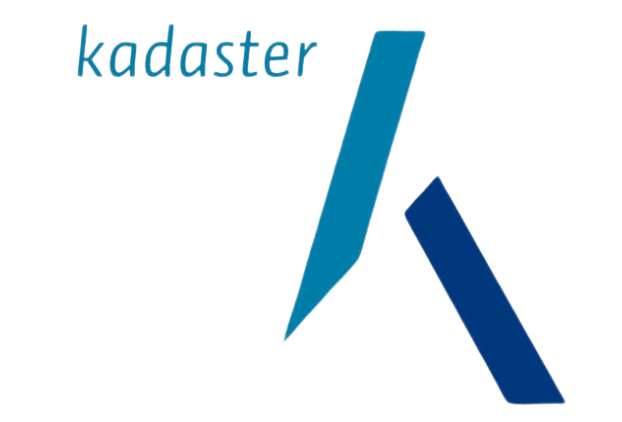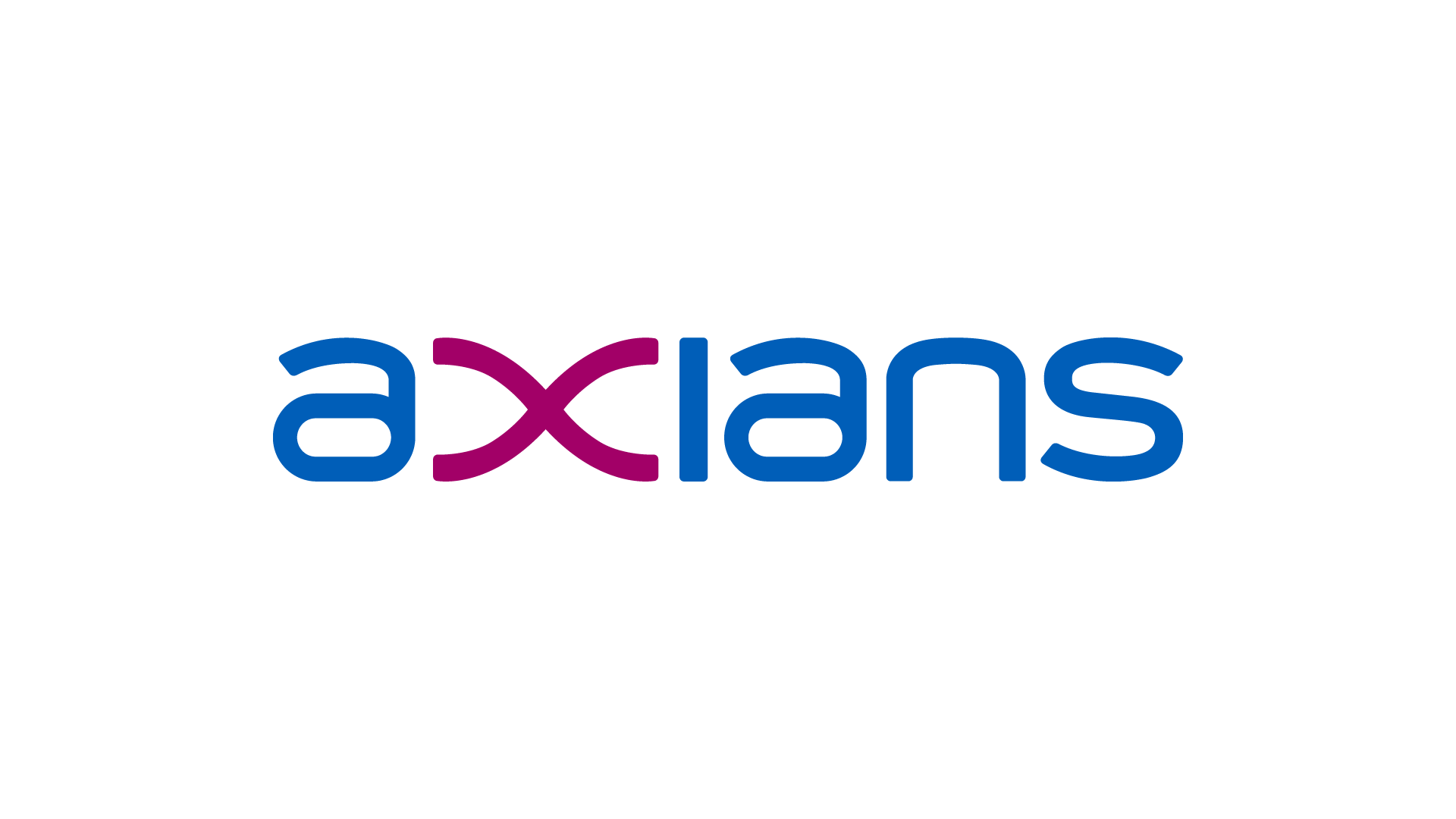Algemene omschrijving
The Prompt Engineering E-Learning is entirely in English. As a Dutch IT training provider, we offer the information on this page in Dutch. At the bottom of the page, you will find a brief summary in English. The topics within the Prompt Engineering E-Learning package itself are described in English.
Met de Prompt Engineering E-Learning krijg je een jaar lang toegang tot een unieke en uitgebreide leerervaring. Deze Prompt Engineering E-Learning biedt jou meer dan 45 uur aan praktisch zelfstudiemateriaal waarin je in jouw eigen tempo de kennis en vaardigheden opdoet om effectief te werken met ChatGPT en andere generatieve AI-systemen. Of je nu een beginner bent of al ervaring hebt, de Prompt Engineering E-Learning biedt jou waardevolle inzichten om jouw technische kennis en vaardigheden uit te breiden, om AI-modellen beter te begrijpen en om ervoor te zorgen dat AI-modellen reageren op uiteenlopende vragen.
De Prompt Engineering E-Learning is zorgvuldig ontworpen om programmeurs en ICT-professionals te ondersteunen in hun professionele ontwikkeling. Met modules gericht op Python-programmering, SQL-databasebeheer, versiebeheersystemen en ethisch hacken, combineert de Prompt Engineering E-Learning theoretische kennis met praktische vaardigheden. Hierbij ligt de nadruk op praktijkgericht leren, zodat je de opgedane kennis en vaardigheden toe kunt passen in de snel veranderende wereld van kunstmatige intelligentie.
Prompt engineering gaat verder dan alleen technologie; het omvat ook de ethische aspecten van AI-gebruik. Door de Prompt Engineering E-Learning door te nemen, zul je ontdekken hoe prompts generatieve AI-systemen aan kunnen sturen om nauwkeurige en contextspecifieke resultaten te leveren. Je leert niet alleen hoe je deze hulpmiddelen effectief in kunt zetten, maar ook hoe je ethisch verantwoord te werk gaat binnen een professionele omgeving.
Doelgroep
De Prompt Engineering E-Learning is geschikt voor zowel beginners als ervaren ICT-professionals en is een waardevolle aanvulling voor iedereen die zich wil verdiepen in de praktische en ethische aspecten van generatieve AI binnen een professionele omgeving.
Dit betreft met name de volgende mensen:
- Softwareontwikkelaars.
- Systeembeheerders.
- AI Engineers.
- Data-analisten.
- Ethisch hackers.
- Beveiligingsexperts.
- Consultants.
- Trainers.
- Innovatie- en AI-managers in sectoren als:
- ICT.
- Financiën.
- Gezondheidszorg.
- Onderwijs.
Wat is inbegrepen
De Prompt Engineering E-Learning is een uitgebreid leertraject dat theoretische kennis combineert met praktische vaardigheden om jouw expertise van generatieve AI en prompt engineering naar een hoger niveau te tillen.
Hier is een overzicht van de inhoud van de Prompt Engineering E-Learning:
Je krijgt een jaar lang toegang tot diepgaand zelfstudiemateriaal dat gericht is op diverse onderwerpen, zoals:
- ChatGPT en generatieve AI.
- Prompt engineering-technieken.
- Technische toepassingen die allemaal versterkt worden met generatieve AI-middelen, namelijk:
- Python-programmering.
- SQL-databasebeheer.
- Versiebeheer (Git).
- Ethisch hacken.
- Praktische opdrachten
- Leadercamp on-demand
- Praktijkgerichte sessies van gerenommeerde experts, waaronder:
- Generative AI en ChatGPT: Inzichten en tips van Professor Jonathan Reichental.
- AI-strategieën en frameworks: Praktische voorbeelden en case studies gepresenteerd door Merav Yuravlivker.
- Prompt engineering-technieken: Direct toepasbare methoden voor ChatGPT, Google Bard, en Bing Chat, uitgelegd door Professor Jonathan Reichental.
Voorkennis
Je hebt geen specifieke voorkennis nodig om te beginnen met de Prompt Engineering E-Learning.
Onderwerpen
Practical ChatGPT: From Use Cases to Prompt Engineering & Ethical Implications
As we navigate the evolving landscape of Artificial Intelligence (AI), one technology stands out due to its potential to redefine our approach to learning and development - ChatGPT, a sophisticated language model developed by OpenAI.
This learning provides learners with a thorough exploration of ChatGPT, starting with an introduction to large language models and their capabilities, the series progresses through practical applications, advanced techniques, industry impacts, and important ethical considerations. Each course aims to equip learners with an in-depth understanding of the model, its functionality, and its wide-ranging applications.
Track 1: ChatGPT Overview
In this part of the ChatGPT learning, the focus will be on understanding the ChatGPT model and using it for text and code generation through effective prompt engineering. Learners will get hands-on experience with real-world examples, improving their proficiency in creating efficient prompts.
Learners will also examine the model's potential impact across various industries and the importance of addressing ethical, privacy, and intellectual property concerns in AI applications. We will conclude with learners having the opportunity to apply what they've learned by building a Python-based, AI-driven application to analyze sentiment in a social media feed.
E-Learning courses
- ChatGPT & Its Practical Use Cases.
- ChatGPT Prompt Engineering Examples & Use Cases.
- Creating Advanced ChatGPT Prompts.
- ChatGPT’s Impact on Various Industries.
- Ethical, Privacy, & Intellectual Property Considerations for ChatGPT.
- The Role of ChatGPT in Shaping Our Future.
Assessment
Final Exam: ChatGPT: From Practical Use Cases to Prompt Engineering and Ethical Implications.
Leadercamp on-demand
- Exploring Generative AI and ChatGPT.
- In this Leadercamp, Professor Jonathan Reichental, a Silicon Valley executive and educator, will provide valuable insights on Generative AI and ChatGPT, including tips and tricks to leverage its value.
- He will also explore emerging examples and case studies that will inspire you.
- Finally, he will review some risks and challenges and give you a sneak peek at what the future of AI may hold.
- Leading with Generative AI.
- In this Leadercamp, Data Society CEO Merav Yuravlivker offers a comprehensive overview of what you need to put in place to power your AI strategy.
- You'll learn what generative AI is and the potential vulnerabilities it can create.
- You'll hear about real case studies of organizations implementing generative AI, both for better and for worse.
- You'll learn key definitions of AI and ML techniques, the tremendous opportunities made available by leveraging this technology, and some key frameworks and guidelines that you need to put in place to lead your industry into the future.
- Tips and Tools for Generative AI Success.
- In this Leadercamp, Dr. Jonathan Reichental, a Silicon Valley executive and educator, provides hands-on, practical guidance to understand the full capabilities of ChatGPT, Google Bard, and Bing Chat.
- He demonstrates powerful techniques that you can try and covers a wide range of prompt engineering tips that will inspire ideas you can use right away in your work. This highly practical session will provide you with valuable new skills.
- Leadercamp on-demand: Power Techniques and Tips for ChatGPT.
- In this Leadercamp, Professor Jonathan Reichental, a prominent Silicon Valley executive and educator, will offer practical, hands-on guidance on how to fully utilize ChatGPT, Google Bard, and Bing Chat.
- Attendees will have the opportunity to learn powerful techniques and try them out in real-time during the session.
- Professor Reichental will also provide a wide range of prompt engineering tips to inspire ideas that can be applied immediately to your work. Don't miss out on this highly practical session that will equip you with valuable new skills.
Introduction to Prompt Engineering
E-Learning courses
Getting Started with Prompt Engineering
Generative artificial intelligence (AI) can create new content, such as text, images, and music. It is powered by machine learning (ML) models that have been trained on massive datasets of existing content. Prompt engineering is the process of designing and crafting prompts that guide generative AI models to produce the desired output.
You will start this course by learning how you can leverage prompt engineering to improve your day-to-day and work-related tasks. Next, you will explore how to use generative AI chatbots such as ChatGPT, Google Bard, and Microsoft Bing Chat.
You will create an account with OpenAI and explore ChatGPT’s interface, before diving into natural-language conversation. You will then explore Google Bard and Bing Chat for conversational AI. Finally, you will work with Perplexity AI.
Exploring the OpenAI Playground
The OpenAI Playground is a web-based tool that lets you experiment with large language models (LLMs) to generate text, translate languages, write creative content, and answer your questions in an informative way. With the Playground, you can input text prompts and receive real-time outputs, and you can adjust hyperparameters to control the creativity, randomness, length, and repetition of the model responses.
In this course, you will begin by creating an account to use the OpenAI Playground and you will learn how you are billed for its usage. Next, you will explore the different chat modes and models and work with the hyperparameters that allow you to configure creativity, randomness, repetition, and the length of model responses.
You will also use stop sequences, which terminate the output when a specific phrase is reached, as well as the frequency and presence penalty, which penalize repetition of words and topics. Finally, you will learn how to view probabilities in generated text and explore how to use presets to share prompts and prompt parameters with other people.
Exploring Prompt Engineering Techniques
Different types of prompts serve distinct purposes when interacting with language models. Each type enables tailored interactions, from seeking answers and generating code to engaging in creative storytelling or eliciting opinions.
In this course, you will learn the four elements of a prompt: context, instruction, input data, and output format. Next, will also explore prompt categories, such as open-ended, close-ended, multi-part, scenario-based, and opinion-based.
Finally, you will look at different types of prompts based on the output that they provide. You will use prompts that generate objective facts, abstractive and extractive summaries, classification and sentiment analysis, and answers to questions. You’ll tailor prompts to perform grammar and tone checks, ideation and roleplay, and mathematical and logical reasoning.
Case Studies in Prompt Engineering
Data generation prompts instruct language models to generate synthetic data, useful for creating datasets. Code generation prompts are used to produce code snippets or entire programs, aiding developers in coding tasks. Zero-shot prompts challenge models to respond to unfamiliar tasks, relying on their general knowledge. Few-shot prompts provide limited context to guide models in addressing specific tasks, enhancing their adaptability.
You will start this course by working with data generation and code generation prompts. You will explore how to use starter code prompts, convert code from one language to another, and prompt models to explain a piece of code. Next, you will see how to leverage generative AI to debug your code and generate complex bits of code with step-by-step instructions. Finally, you will explore techniques to improve prompt performance.
Prompt Engineering for Programmers to Learn Python
Explore the dynamic realm of Python with the strategic lens of prompt engineering, a methodical approach to mastering Python for developers. This learning journey highlights the versatility of Python programming, leveraging generative AI prompts to enhance the overall learning experience. The journey encompasses fundamental programming actions such as working with variable and data structure, facilitated by generative AI tools.
The exploration advances into intricate Python concepts, including loops, functions, conditional statements, string operations, and data analysis, all enhanced by the strategic application of prompt engineering. This holistic approach ensures the development of a robust skill set for effective version control and adept Python programming.
E-Learning courses
Using Generative AI Tools to Learn Python
Python is a general-purpose programming language used for web development, machine learning, game development, and education. It is known for its simplicity, readability, and large community of users and resources.
Begin this course by exploring Python with the help of AI tools like ChatGPT, focusing on the importance of prompt engineering. You will install Python using the Anaconda distribution and write code in Python using Jupyter notebooks, allowing you to quickly prototype and get feedback. Next, you will discover variables and data types and work with strings, integers, and floats. You will encounter errors as you program and learn how to debug your code using generative AI tools.
Finally, you will examine Python data structures such as lists, tuples, sets, and dictionaries. This course will provide you with a solid knowledge of the basics of Python and confidence in using generative AI tools to help you with your learning journey.
Prompt Engineering to Learn Python Loops & Functions
Loops and functions are two of the most important concepts in Python programming. Loops allow you to repeat a block of code a certain number of times, or until a condition is met. Functions allow you to group together related code and reuse it throughout your program.
Begin this course by exploring shallow and deep copies of data structures and performing string splicing operations in Python. Then you will use comparison and logical operators to check whether a condition is satisfied. You will evaluate conditions using prompt engineering to find solutions to your problem scenarios.
Next, you will iterate over sequences using for and while loops and use the break and continue keywords. You will create and use functions in Python, discovering how to prompt generative AI tools to write functions for you in response to stubs that you provide. Finally, you will focus on first class functions and lambdas.
Leveraging Prompts for Python Classes, Scripts, & Data Analysis
Classes and objects are fundamental concepts in Python programming, while data analysis and visualization are two of the most important applications of Python. You will begin this course by creating a simple class in Python and instantiating objects of that class. You will see how you can use prompts to define what you want your classes to do and then leverage generative AI tools to write the code you need for your classes, member variables, and methods.
Next, you will perform real-world tasks like data analysis and visualization using Python libraries. Then you will use prompt engineering help to make HTTP requests to REST APIs to retrieve and add data. You will write and execute basic code in Python and accept input from the command line. To round off this course, you will import your script into another file the same way you would import a library such as Pandas.
Assessment
Final Exam: Prompt Engineering for Programmers to Learn Python.
Prompt Engineering for Querying SQL Databases
E-Learning courses
Querying SQL Databases: Learning SQL Using Prompt Engineering
Structured query language (SQL) is a powerful query language designed for managing and manipulating relational databases. Its declarative nature allows users to interact with databases by specifying the desired result, leaving the system to determine the optimal method of execution.
Begin this course with an introduction to SQL, including the features of SQL and how and where SQL is used. Then, you will install and operate MySQL, utilizing the assistance of generative artificial intelligence (AI) chatbots ChatGPT and Bard. You will work with the MySQL Workbench and learn to create tables, insert data into tables, and update and delete records in tables.
Next, you will find out how to apply constraints on tables, use NOT NULL constraints to prohibit missing values, and use unique constraints, which ensure distinct values in columns. Finally, you will create and work with primary key constraints that are used to uniquely identify records in a table.
Querying SQL Databases: Using Generative AI Tools to Filter & Group Data
In structured query language (SQL), filtering and grouping are fundamental operations that enable precise control and analysis of data. Begin this course by filtering your data using SQL queries. You will learn how to use the WHERE clause with comparison and logical operators to create predicates and how to use the LIKE and IN keywords for filtering. Then you will discover how to read data from a CSV file into a MySQL table using the MySQL workbench.
Next, you will work with subqueries to help execute queries using data from multiple tables and you will explore foreign-key constraints to maintain referential integrity. You will examine grouping and aggregation of your data, including simple numeric aggregations like COUNT, SUM, and AVG.
Finally, you will perform basic string manipulation and math operations on table columns, divide your data by categorical columns and perform aggregations for each category, and filter the results of grouped and aggregated tables.
Querying SQL Databases: Prompt Engineering to Work with Advanced SQL Operations
Joins in SQL combine data from multiple tables, linking related information based on common columns. Views offer a virtual representation of data, simplifying complex queries. Triggers execute predefined actions in response to specific events and transactions safeguard against data inconsistencies in the event of failures.
Begin this course by creating indexes on SQL tables to enhance query performance. Next, you will explore joining two tables in SQL, use prompt engineering to specify how you want to combine data, and have ChatGPT and Bard generate the queries you need. Then you will create and query simple views and perform normalization so that your data adheres to principles that reduce redundancy and maintain data integrity.
You will create triggers for row insertions, updates, and deletes, all with generative artificial intelligence (AI) help. Finally, you will work with transactions, use prompt engineering to state your problem statement, and have generative AI write your queries for you.
Prompt Engineering for Programmers to Learn Version Control
Explore the dynamic realm of Git with the strategic lens of prompt engineering, a methodical approach to mastering Git for developers. This learning journey highlights the principles of Git version control, leveraging generative AI prompts to enhance the overall learning experience.
In this comprehensive learning, delve into Git fundamentals using prompt engineering, gaining proficiency in essential version control concepts, remote repository management, and branching strategies. Explore advanced Git techniques, employing generative AI prompts for seamless navigation and understanding of complex scenarios.
E-Learning courses
Prompt Engineering for Git: Leveraging Prompt Engineering to Learn Git
Version control systems allow you to track changes to your code over time and collaborate on projects. They are widely used in software development, but can also be used for other purposes, such as tracking changes to documentation, website code, or other types of files.
Git is a popular version control system that has a steep learning curve for beginners but with help from generative AI tools you’ll find that learning Git is easy and intuitive. In this course, you will start with the basics of Git and learn the difference between local Git repositories and remote repositories on hosting services such as GitHub and GitLab.
You will develop prompts with generative AI tools such as ChatGPT and use their responses to guide you while you are exploring Git commands. Next, you will learn how to use Git for version control and how to add files to the staging area.
After that, you will commit your files to your repository and view all of the commits. Finally, you learn how to perform operations such as restoring and modifying staged files and how to use commit hashes to uniquely identify commits and perform operations on them.
Prompt Engineering for Git: Working with Remote Repositories & Generative AI
GitHub, in conjunction with Git, provides a powerful framework for collaboration in software development. Git handles version control locally, while GitHub extends this functionality by serving as a remote repository, enabling teams to collaborate seamlessly by sharing, reviewing, and managing code changes.
In this course, you will begin by setting up a GitHub account and authenticating yourself from the local repo using personal access tokens. You will then push your code to the remote repository and view the commits. Next, you will explore additional features of Git and GitHub using generative AI tools as a guide.
You will also create another user to collaborate on your remote repository, and you’ll sync changes made by other users to your local repo. Finally, you will explore how to merge divergent branches. You will discover how to resolve a divergence using the merge method with help from ChatGPT and bring your local repository in sync with remote changes.
Prompt Engineering for Git: Using Prompt Engineering to Work with Git Branches
Branches are separate, independent lines of development for people working on different features. Once you have finished your work, you can merge all your branches together. You will start this course by creating separate feature branches on Git and pushing commits to these branches. You will use prompt engineering to get the right commands to use for branching and working on branches.
You will also explore how to develop your code on the main branch, switch branches, and then ultimately commit to a feature branch. Next, you will explore how you can stash changes to your project to work on them later. Finally, you will discover how to resolve divergences in the branches. You will try out both the merge and rebase methods and confirm that the branch commits are combined properly.
Assessment
Final Exam: Prompt Engineering for Programmers to Learn Version Control.
Prompt Engineering for Ethical Hacking
This learning takes the robust and well-regarded framework of the Ethical Hacking certification and introduces an innovative twist. While the core principles and concepts of ethical hacking remain, we’ve creatively woven in the cutting-edge technologies of Prompt Engineering and Generative AI, providing a fresh perspective to this critical domain of cybersecurity.
Our goal is to extend the traditional curriculum, integrating AI capabilities into each course, thereby creating a learning journey that not only covers the essentials for ethical hacking but also the ever-growing influence of AI in this field.
We recognize that the cybersecurity landscape is in constant flux and that new technologies are continually shaping the threats and opportunities we face. We have been clever in merging these two complex areas, reinterpreting the Ethical Hacking journey through the lens of Generative AI and Prompt Engineering.
E-Learning courses
Prompt Engineering: Ethical Hacking & Generative AI Fusion
In our increasingly digital world, the convergence of ethical hacking and generative AI technologies has become a crucial frontier in cybersecurity. As technology advances, so do the methods employed by hackers, making it essential for ethical hackers, or white hat hackers, to stay one step ahead. This course introduces you to the exciting world of ethical hacking and generative AI technologies.
Prompt Engineering: Generative AI for Reconnaissance
In today's rapidly evolving digital landscape, the convergence of ethical hacking and generative AI has emerged as a powerful force in countering cybersecurity threats. As malicious hackers adapt and exploit advanced technologies, the need for innovative defenses becomes paramount. This course explores the cutting-edge domain of generative artificial intelligence (AI) and reconnaissance techniques.
Prompt Engineering: Generative AI for Scanning & Enumeration
As technology continues to advance, hackers are constantly adapting their methods, making it imperative for ethical hackers to stay one step ahead. This course explores the convergence of ethical hacking and generative AI, specifically focusing on the scanning and enumeration phase of the ethical hacking process.
Prompt Engineering: Generative AI for System Hacking
Ethical hackers are key to maintaining a robust cybersecurity posture, and must commit to continuous improvement to stay ahead of malicious actors. This course provides an immersive journey into the techniques and methodologies employed by ethical hackers to protect and secure systems while focusing on generative artificial intelligence (AI) as a transformative resource in the hacking toolchain.
Prompt Engineering: Generative AI for Malware & Social Engineering
This course journeys deep into the techniques and methodologies employed by ethical hackers to uncover malware and educate users in the ongoing battle against social engineering and how generative artificial intelligence (AI) can assist them in this pursuit.
Prompt Engineering: GenAI’s Impact on Network & Perimeter Ethical Hacking
Begin by exploring the fundamentals of network and perimeter hacking, typical network attack techniques, and how these attacks can be enhanced using generative AI.
Prompt Engineering: Web Application & Database Hacking in the Age of GenAI
This course is a comprehensive journey into the tools and techniques available to ethical hackers to discover vulnerabilities and weaknesses in web applications and databases.
Particular attention will be paid to how generative artificial intelligence (AI) can help in the discovery and mitigation of attacks on these technologies, including those enhanced by integrating AI in the attack.
Prompt Engineering: Cloud Computing & IoT Hacking in the Era of GenAI
This course dives deep into the interplay between Cloud computing, IoT, and generative artificial intelligence (AI), shedding light on their collective vulnerabilities and potential and demonstrating how generative AI can be both a formidable adversary and a powerful ally.
Prompt Engineering: Mobile Platform Security in the GenAI Era
With AI-driven functionalities at the forefront of mobile technology innovation, understanding the security implications and nuances is paramount. In this course, explore common mobile platform vulnerabilities and utilize generative AI to bolster mobile security measures.
Prompt Engineering: Covering Tracks with GenAI
This course examines the fusion of traditional stealth techniques in hacking with the cutting-edge capabilities of generative AI, looking at how generative AI can be harnessed to leave no digital footprint, ensuring prolonged access to compromised systems.
Assessment
Final Exam: Prompt Engineering for Ethical Hacking.
English Summary
The Prompt Engineering E-Learning provides one year of access to over 45 hours of practical self-paced course material, focused on working effectively with ChatGPT and other generative AI systems. Designed for programmers and IT professionals, the Prompt Engineering E-Learning covers Python, SQL, version control, ethical hacking, and the ethical use of AI. Gain the skills to optimize AI responses and apply your knowledge in the world of artificial intelligence.






















